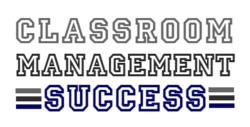Dealing with difficult students can be a pain. There are times when it’s too much already that you no longer know what to do for them to just behave. Sometimes you even think if you did something that made them hate you so much.

I’ve read this paper by Mary Ellen Beaty-O’Ferrall, Alan Green, and Fred Hanna, from the website of Association for Middle-Level Education about dealing with the most challenging students. They listed down 3 strategies in the field of counseling and psychotherapy that teachers can learn and apply in their classrooms. It’s a very straightforward paper that is purposely written to help teachers. In this blog post, I would like to summarize the 3 strategies from the paper, and make it easier to understand.
- Building Empathy
According to Merriam-Webster dictionary, the simple definition of ‘Empathy’ is the feeling that you understand and share another person’s experiences and emotions: the ability to share someone else’s feelings.
As a teacher, it is critical when developing relationships that you know and understand the student. Teachers must take the initiative and certain steps to learn and understand each student. When teachers understand and empathize with their students, it will result in the student feeling understood.
Take a personal interest in your students. Get to know them. Understand them so they know that somebody is listening to them. No child is born bad–no student behaves badly just because he or she wants to be that way. There is always a reason.
- Admiring Negative Attitudes and Behaviors
Research states that teachers’ actions in their classrooms have twice as much impact on student achievement in several fields. Admiring negative behavior may seem like the thing not to do, but it actually has an effect on the student that will benefit him. There’s a proper way on admiring though. You should acknowledge the negative attitude or behavior as a ‘skill’ and give credit to the student for all the years he or she has practiced the skill. For example, there is a manipulative adolescent girl. You can acknowledge her bring manipulative as the skill to ‘influence people.’ After acknowledging the skill, you will now redirect it. You can say that her skill can be valuable in certain careers such as sales and management. Now the student will be surprised to hear that there is something to admire by her behavior and that somebody understands her. There will now be a bridge of trust between the student and teacher.
All these must be done with sincerity. Any hint of sarcasm can backfire and make the student more difficult to deal with.
- Leaving One’s Ego at the Door
This one is pretty simple.
A teacher should not take comments and manipulations of students personally, as a clash between the student and teacher is likely to follow. He should always act strategically, not emotionally. There are patience and practice involved in improving the teacher’s skill to suspend one’s own reaction. Being aware of your vulnerabilities can be redirected it into something good.

Dealing with the most challenging of students can be difficult and requires a lot of patience. These 3 strategies can help you develop a relationship with your students and build trust between you and them. In the classroom, it is critical that teachers find ways of building relationships with all students. Relationship-driven teaching can lead to amazing things.









